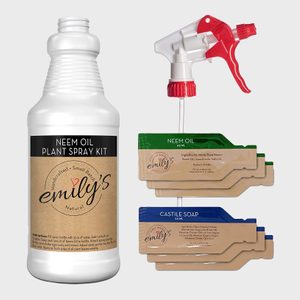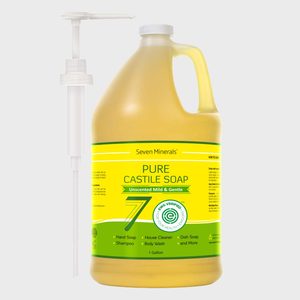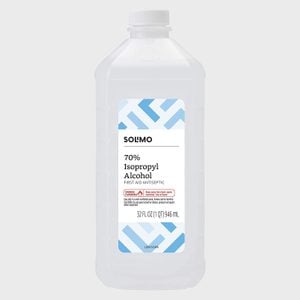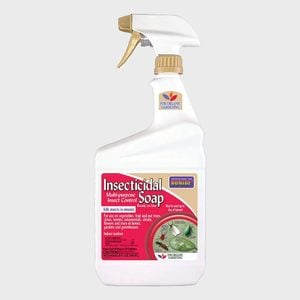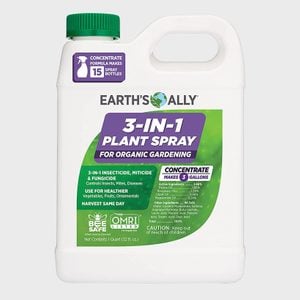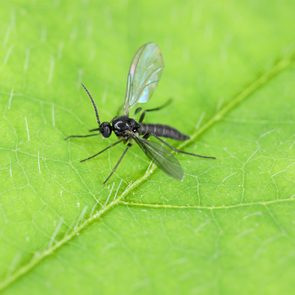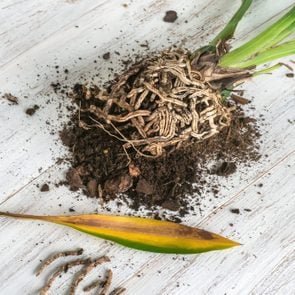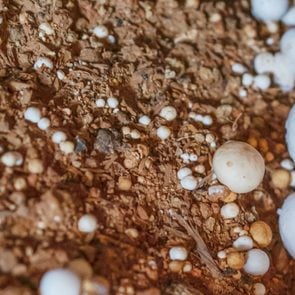How to Get Rid of Mealybugs
Updated: May 24, 2023

Our editors and experts handpick every product we feature. We may earn a commission from your purchases.Learn more.
Have you noticed tiny, white, waxy bugs on the leaves of your favorite indoor plants? Those are mealybugs, and they’re slowly sucking the life out of your houseplants. Although they are annoying, mealybugs thankfully aren’t harmful to humans or pets. That said, you definitely don’t want them lounging around your home and snacking on your decor, so you’ll want to learn how to get rid of mealybugs ASAP.
And yes, it is possible to get rid of your mealybug infestation and even revive a seemingly dead plant. We spoke to the experts to find out how to combat these common houseplant pests and make your favorite low-maintenance plants, low-light plants or sunlight-loving indoor fruit trees healthy again. Plus, we’ll also show you how to prevent these problems before they start—and what to look for as soon as you bring a new plant home from the nursery or have one delivered to your doorstep from the best online plant sites.
Get Reader’s Digest’s Read Up newsletter for more home tips, humor, cleaning, travel, tech and fun facts all week long.
What are mealybugs?
Mealybugs are small, oval-shaped, soft-bodied insects, and hundreds of species reside in North America. Some species, such as the common citrus mealybug, attack outdoor plants and crops, but they also feed on your indoor plants—and especially love tropical plants and succulents. “They often look like white cotton clinging to the leaf,” explains Alfred Palomares, vice president of merchandising and resident “plant dad” at 1-800 Flowers.com. “If untreated, they can leach the juice out of a plant.”
Mealybugs like to feed on the stem tips as well as the spot where the leaf protrudes from the stem, but they can invade and take over the entire plant, including infesting the roots. A female mealybug can lay up to 600 eggs over five to ten days, and those eggs begin to hatch within several days. The life cycle from egg to adult female is around six to ten weeks, so it’s easy to see how a mealybug infestation can get out of control quickly. Mealybugs can also crawl from one plant to another, so your entire houseplant collection is at risk.
What causes mealybugs?
Mealybugs can enter your home in a few different ways. “The most common type of exposure is bringing home a new plant that has mealybug eggs or young mealybugs on it,” says Justin Hancock, a horticulturist at Costa Farms. Since mealybugs and their eggs often have a white cotton coating, it’s easy to see if they’re attached to your houseplant. Check the leaves of any new plant you bring home for that telltale sign.
And the plants themselves aren’t their only method of invasion. “Mealybugs can survive three weeks (or potentially longer) on a pot or other surface without food, so you can also introduce them via containers, saucers, plant stands and trellises,” explains Hancock. “And because it can take up to 10 days for eggs to hatch, it can seem like mealybugs can come out of nowhere when introduced.”
How to get rid of mealybugs
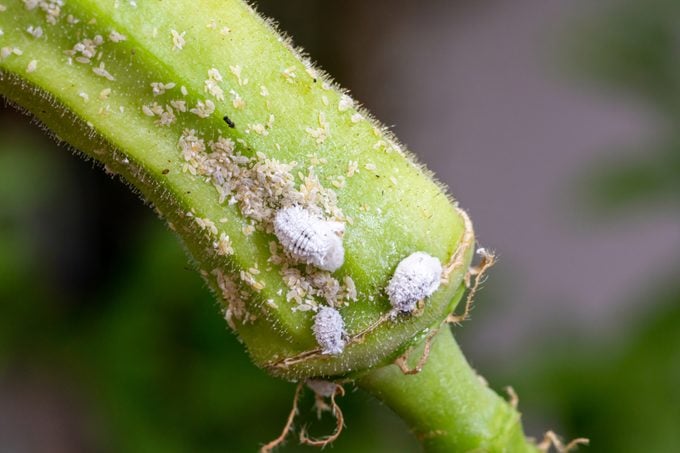
Eliminating these pesky critters will require time, consistency and persistence. It’s so challenging to get rid of mealybugs, says Hancock, because “as they mature, they cover themselves in a white, waxy coating that helps protect them from some natural predators, as well as some common insect treatments.” The other issue is that they reproduce so quickly and efficiently, which means you’ll eventually find yourself dealing with a lot of hard-to-eliminate pests.
The first step is knowing you have a problem: Aside from the white cottony spots, a sticky film on your plant leaves is a big indication that you’re dealing with a big infestation. This sticky substance comes from the high sugar content in mealybug feces, explains Hancock. (This is similar to the “honeydew” that aphids leave behind, and yep, that’s also excrement.) Over time, you’ll also see a sooty mold that grows on top of these droppings; this is a fungus. “Sooty mold is not harmful to your plant and can be washed off with water, along with the sugar-rich droppings,” say Hancock, “but it’s a sign there’s a pest infestation.”
Once you’ve identified the problem, Hancock recommends treating the affected plants every week or every other week for a couple of months. The frequency and duration will depend on the size of the infestation, and the ideal treatment will depend on the age of the mealybugs, the level of infestation and your personal preference for products. The most important rule of all? “You need multiple treatments to be successful,” says Hancock.
The most effective mealybug treatments
So, which products will help you bid adieu to your pest problem? The following mealybug treatments are safe for you and, in most cases, your pets—but kill mealybugs. Just remember to “be thorough and repetitive with weekly cleaning until the infestation is gone,” says Palomares. “Be patient!”
Neem oil
Neem oil comes from the seeds of the neem tree, which is originally from Southeast Asia, and it’s a common (and expert-approved) natural pesticide. “It will kill young mealybug larvae and may penetrate the waxy coating on the adults,” says Hancock. “Neem oil is nontoxic for animals and plants, but make sure to follow the instructions to reduce exposure.” Spray it wherever you see mealybugs, as well as in crevices where they may be hiding, or dab it on with a cotton swab.
Neem oil and soap spray
What just might be better than one natural product? Two mixed together in your own homemade concoction! “Mix 0.3 gallon (1 liter) water, 1 tsp. neem oil and 1/4 tsp. Castile soap,” advises Nastya Vasylchyshyna, resident botanist expert for the NatureID app. “Thoroughly shake the mixture in a fine mist sprayer to blend the ingredients and before each use. The soap facilitates the blending of oil and water and helps the natural pesticide stick to the leaves.”
Garlic infusion
“To prepare a garlic infusion, smash a few cloves, pour boiling water over them and leave this mixture for a night,” says Vasylchyshyna. “The next day, strain it to remove the pulp, and use the infusion to spray the infested plant.”
Just keep in mind that horticultural experts have mixed opinions on using homemade treatments like this one when figuring out how to get rid of mealybugs. Hancock is generally not a fan because he says they can be dangerous to you or your plant, depending on the mix. Vasylchyshyna recommends testing all homemade treatments on two to three leaves by evenly covering the leaves with the product and monitoring their condition for a few days. “If there isn’t any change to the leaf, you can consider this treatment safe,” she says.
Rubbing alcohol
“Rubbing alcohol will instantly kill a mealybug in just about any life stage,” says Hancock. Simply dip a cotton swab in 70% isopropyl alcohol and wipe on any affected leaf or stem. However, warns Hancock, while “this can be effective if you get all the mealybugs, it can be hard to see the tiny, freshly hatched nymphs.” Once the leaves are cleaned, Palomares advises holding the plant upside-down and thoroughly rinsing it with lukewarm water.
One word of warning: If you try this treatment, limit your plant’s exposure to sunlight, because this treatment can cause leaves to burn, says Palomares. FYI, here’s what else it could mean when brown tips on leaves appear.
Insecticidal soap
Get a spray bottle, mix insecticidal soap with water and spray on all areas where you see mealybugs. Insecticidal soaps are made with the potassium salt of the fatty acids, and they’re safe for plants, though you should look for a soap with minimal additives and without perfumes. Just be aware that insecticidal soap “is effective on the larvae, but it may not be as effective on the adults, thanks to their waxy coating,” says Hancock. Dish soap can be harmful for your plants, so it’s not recommended.
Insecticide
If you need a more intense treatment, Palomares recommends using a biodegradable, nontoxic insecticide. Spray the leaves and stem with the insecticide, or use a cotton ball or swab, wiping every part of the plant that has mealybugs. And follow the instructions carefully. “Avoid using an excessive dosage of the product to prevent root or leaf burn,” says Vasylchyshyna.
Some insecticides have more natural ingredients, while others are more synthetic. Read the labels before purchasing or applying to ensure you use the correct amount and properly protect your skin.
How to prevent mealybugs
Mealybugs are difficult to prevent, but healthy plants are less likely to be affected by an infestation than vulnerable, stressed or diseased plants. “When plants are not in the best of health, they emit hormones that attract pests,” says Palomares. “But, unfortunately, even when plants are in the best health, mealybug infestations can happen.”
If you begin to see what looks like white cotton on the leaves and stems, it’s time to do a treatment, since this is an indicator that mealybugs are on your houseplants.
Because mealybug infestations are often caused by new plants, carefully check the leaves of any new plant before bringing it into your home. If you think a plant is OK but want to err on the side of caution, Palomares says, “isolate the plant from the rest of your greenery in your home or garden.” Keep plants outside, weather permitting, or in an area where they still receive sufficient light and warmth but won’t potentially spread any pests. Hancock suggests waiting around six weeks before letting these plants inside or near your other plants, since “mealybugs can lay eggs and survive awhile without food, and then it takes up to two weeks for those eggs to hatch.”
Repotting a plant? As noted earlier, it’s also important to clean any new containers and trays, whether you’re buying them new or secondhand. Wash any new pots and saucers that may have come from a place that had mealybugs, ideally in the dishwasher, says Vasylchyshyna.
Now that you know how to get rid of mealybugs, find out what to do if you spot powdery mildew on plants.
Sources:
- Alfred Palomares, vice president of merchandising and resident “plant dad” at 1-800 Flowers.com
- Justin Hancock, horticulturist at Costa Farms
- Nastya Vasylchyshyna, resident botanist expert for the NatureID app
- EPA: “Cold Pressed Neem Oil (025006) Fact Sheet“
- Wisconsin Horticulture Division of Extension: “Mealybugs”




















